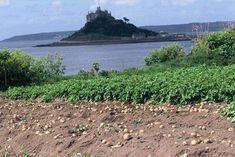
A strain of potato blight that may be less susceptible to a commonly used fungicide has been found on British soil for the first time.
The strain, known as green33, had previously only been found in the Netherlands, where it was reported to have infected around 20 per cent of crops.
Dr David Cooke from the James Hutton Institute, which monitors the UK blight outlook, said: “green33 refers to a certain strain. The isolate didn’t appear to be well controlled by Fluazinam compared to genotype 13_A2.”
However, he said the link between the green33 strain and reduced effectiveness of the Fluazinam fungicide is not established and is under investigation.
The James Hutton Institute is working closely with the Potato Council to monitor crop populations so that the most appropriate advice can be given.
In a statement, the Potato Council said: “Given the current outlook in other parts of Europe, together with any possibility of resistance problems, we will be monitoring it very closely. The advice is to remain vigilant for initial blight outbreaks and we have issued advice about this to our levy payers.
“The Potato Council has a dedicated page on its website for monitoring blight, along with 300 blight scouts across the country, who monitor for the disease. Indeed, we invite more scouts to help. You can monitor suspected blight and confirmed blight areas on our website. The industry is aware, actively monitoring and managing the response to protect potato crops.”
The first blight outbreak in Scotland took place in Fife on 28 June, 2011, and the strain then reached England on July 13 of the same year in Cornwall.
But Cooke said that 2011 was generally a relatively low blight risk season, with not a lot of blight reported in the UK crop. There were just 183 outbreaks sampled in total across England, Scotland and Wales.



